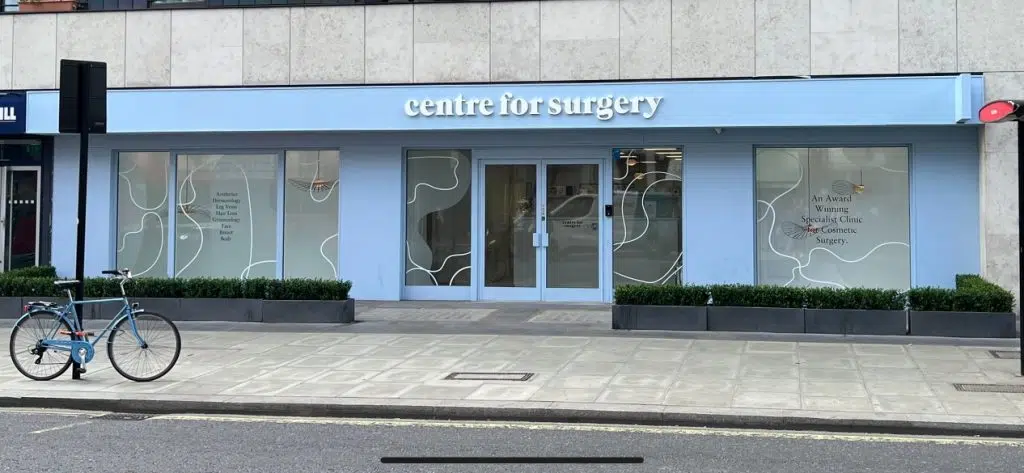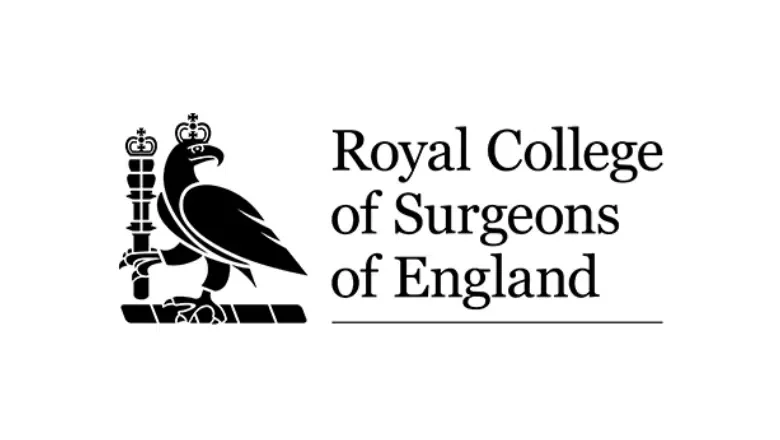Vaginal rejuvenation procedures can help women to get their pre-pregnancy bodies back. Many women may find they have lost their self-confidence after childbirth. Labiaplasty or vaginal tightening surgery is designed to improve both the appearance and function of the vagina, depending on what patients are most concerned about.
How is the Vagina Affected by Childbirth?
Risk factors for a loose vagina include:
- Women who give birth to large babies
- Women over the age of 35
- Women with collagen tissue defects such as Ehlers-Danlos syndrome
- Women who have a yo-yo diet leading to fluctuations in weight
- Use of vacuum extraction or forceps during vaginal delivery
- Women who give birth to twins or triplets (or more)
Is it Possible to Tighten the Vagina Following Childbirth?
Following childbirth, many women experience changes in their vaginal health, including alterations in tone and strength. The vagina, known for its remarkable resilience, often undergoes a natural recovery process where it regains much of its pre-pregnancy form. However, the journey to feeling fully restored varies greatly among individuals, with some seeking additional measures to aid in the tightening of the vagina to enhance comfort and confidence.
It’s crucial to acknowledge that the notion of returning to a “normal” state post-birth is subjective and highly personal. The body’s ability to recover and the degree of change experienced can differ widely. For those looking to support their recovery and possibly expedite the tightening of the vagina post-childbirth, several options are available:
- Time: Patience plays a crucial role in the recovery process post-childbirth. The body naturally works to heal and readjust in the months following delivery, with some women noticing a gradual tightening and return of the vagina to its pre-birth state. This natural recovery process, however, may vary significantly among individuals.
- Kegel Exercises: Named after Dr. Arnold Kegel, these exercises are designed to strengthen the pelvic floor muscles, which support the uterus, bladder, small intestine, and rectum. Regular and consistent practice of Kegel exercises can lead to improved urinary control, enhanced sexual function, and tighter vaginal muscles, contributing positively to postpartum recovery.
- Physiotherapy: Consulting with a specialist in pelvic floor physiotherapy can provide tailored advice and exercises for your specific situation. A physiotherapist may recommend various techniques, including the use of vaginal weights or other devices, to strengthen the pelvic floor and help tighten the vagina after childbirth.
Does Having a C-Section Prevent Vaginal Looseness?
It is often incorrectly assumed that choosing to have a C-section may help to prevent vaginal laxity after childbirth. This is not the case, and women can develop vaginal looseness if a large pregnant uterus exerts pressure on the vagina. Hormonal surges during pregnancy can adversely affect the muscular tone of the vagina. During the later part of pregnancy, certain pelvic ligaments undergo relaxation under the influence of progesterone, and this may contribute to the development of vaginal prolapse.
When is the Right Time for Vaginal Rejuvenation Surgery?
Women have several options when it comes to vaginal rejuvenation after pregnancy. Treatment could be carried out after having a first child or deferred until you have completed your family. In all cases, it is essential to take time out for healing and recovery.
We recommend waiting for a minimum of six months before considering vaginal rejuvenation surgery, as your body will still be recovering from the effects of pregnancy and childbirth before this time. Your body should be in the ideal condition before having vaginal rejuvenation to achieve the best possible results. Patients should also take into account the recovery period after any procedure.
It is important to arrange for a friend or relative to help you during the first few days after surgery, and we would recommend taking one week off from work. When you consider these important factors, it can help you to determine the best time to have vaginal rejuvenation surgery. Depending on the extent of the vaginal looseness, we may recommend some women have vaginal rejuvenation after their first child. In contrast, others may be recommended for treatment once they have completed their family. Vaginal rejuvenation can involve laser or surgical techniques depending on the extent of vaginal laxity. Results of vaginal achieve a nation can last for many years, and we would recommend an in-person consultation with an expert gynaecologist here at Centre for Surgery. After your consultation, it is a good idea to reflect upon all aspects of the discussion to help you make an informed decision that is right for you.
RELATED: How much does vaginal rejuvenation cost?
What is Vaginal Rejuvenation Surgery?
Vaginal rejuvenation surgery represents a collection of procedures aimed at enhancing and revitalising the appearance, function, and sensation of the vagina after childbirth. These interventions can address various concerns, from vaginal laxity to aesthetic preferences, catering to both medical and cosmetic motivations. The journey towards deciding on vaginal rejuvenation involves understanding the array of surgical options available, each designed to meet specific needs and expectations. Below, we explore the typical procedures that form part of vaginal rejuvenation efforts post-childbirth:
Vaginoplasty
Vaginoplasty, also known as vaginal tightening surgery, targets the reconstruction of the vaginal canal to address the loosening of tissues often resulting from childbirth or ageing. This procedure aims to remove excess, loose vaginal tissue, thereby narrowing the vaginal canal. The primary objective of vaginoplasty is to restore the vagina’s tightness, which can significantly enhance sensitivity and satisfaction during sexual intercourse. By reinforcing the vaginal muscles and reducing the internal diameter, vaginoplasty not only improves the functional aspect of the vagina but also boosts the individual’s self-confidence and comfort.
Perineoplasty
Perineoplasty focuses on the surgical repair and reconstruction of the perineum, the area between the vagina and the anus that may sustain damage during childbirth. Women who have undergone traumatic vaginal deliveries often experience painful and sensitive scarring in this region, along with possible alterations in the size of the vaginal opening. Perineoplasty seeks to correct these issues, providing relief from discomfort and improving the aesthetic appearance of the perineal area. This procedure frequently accompanies vaginoplasty, allowing for a more comprehensive approach to vaginal rejuvenation by addressing both the vaginal canal and the perineum in one surgical session.
Labiaplasty
Labiaplasty targets the labia minora, aiming to resize or reshape them to achieve a more balanced appearance in relation to the labia majora. This procedure addresses concerns over the size, shape, or symmetry of the labia minora, which for some, may cause discomfort during physical activities, sexual intercourse, or when wearing tight clothing. Additionally, labiaplasty can enhance the overall aesthetic appearance of the genital area, leading to improved self-esteem and sexual confidence. It stands as one of the most sought-after vaginal plastic surgery procedures in London and across the UK, reflecting a growing awareness and demand for personalized cosmetic interventions.
Clitoral Hood Reduction
Clitoral hood reduction, or hoodectomy, is tailored to remove excess tissue covering the clitoris, which can sometimes obscure it and reduce sexual pleasure. By carefully reducing the tissue of the clitoral hood, this procedure can enhance the physical sensation during sexual activities and improve the genital area’s aesthetic appeal. Often performed in conjunction with labiaplasty, clitoral hood reduction is aimed at achieving a harmonious and aesthetically pleasing genital appearance while potentially increasing sexual satisfaction due to the greater exposure of the clitoris
What are the important questions to ask your labiaplasty surgeon?
The consultation serves as the foundation for effective treatment planning. The following are examples of questions you could ask your surgeon at your in-person consultation at Centre for Surgery in London:
- What non-surgical options are there for tightening the vagina
- What are the benefits of a labiaplasty?
- Will labiaplasty affect my ability to get pregnant?
- Are my expectations for treatment considered realistic?
- What are the potential risks of labiaplasty or vaginoplasty surgery?
- Is vaginoplasty permanent?
- How long does it take to recover after labiaplasty?
- Is vaginoplasty painful?
- Will labiaplasty affect sensation?
- How long does labiaplasty swelling last?
- Can vaginoplasty be combined with labiaplasty?
What are the different labiaplasty techniques?
Women may choose to have labiaplasty surgery for several reasons. Labia may significantly enlarge after puberty or childbirth and as part of the natural ageing process. Women may experience painful sexual intercourse and find certain types of clothing difficult to wear due to rubbing against the delicate labial tissue. Large labia may also cause personal hygiene problems and increased vaginal infections. Labiaplasty surgery can effectively address these issues. Traditionally, labiaplasty was performed with the labial amputation method, although labiaplasty techniques have evolved over time and can be generally categorised into two main types:
Trim labiaplasty
The trim technique is the most popular method of labiaplasty surgery. Trim labiaplasty removes excess labia minora tissue, then suturing the excised ends to form a smooth labial edge. The labia minora should appear smaller, symmetrical, and better balanced with the outer labia majora.
Wedge labiaplasty
The wedge technique of labiaplasty is well suited to removing thickened labia minora. The wedge technique is particularly effective for removing larger amounts of labia tissue whilst preserving the smoothness of the labial edges. Natural-looking results can be achieved with wedge labiaplasty.
RELATED: Trim Labiaplasty vs Wedge Labiaplasty
What does vaginal tightening surgery involve?
A loose vagina commonly develops after childbirth and is often due to stretching of the vaginal tissues and damage to the pelvic muscles. There are several different grades of vaginal laxity. Some women may have minor degrees of vaginal looseness, which can be effectively treated with laser vaginal tightening. More extensive degrees of vaginal laxity involving pelvic muscle separation can result in a lack of sensation during sexual intercourse, and some women may find sanitary products to slip out of the vagina easily.
RELATED: What is vaginal tightening surgery?
The surgeon will plan the procedure during your consultation and discuss what level of vaginal tightening can be achieved. The vaginal tissue to be removed will be carefully marked before surgery. The surgeon will surgically remove excess skin and tighten the deeper vaginal muscles using dissolvable stitches. The superficial layer of the vagina is then carefully closed. A wide vaginal opening can be reduced in size when a perineoplasty procedure is combined with vaginal tightening surgery.
RELATED: Is vaginoplasty painful?
Labiaplasty vs Vaginoplasty – which is best for me?
It is important to remember that labiaplasty and vaginoplasty target different concerns. Labiaplasty surgery can enhance the aesthetics and function of the external genitalia by reducing the size of the enlarged labia. A vaginoplasty is designed to tighten the vagina, which is more internally situated, to correct several problems, such as lack of sensitivity during intercourse, urinary incontinence, vaginal prolapse and pelvic heaviness.
RELATED: What is the difference between vaginal rejuvenation and labiaplasty?
The best way to determine the most appropriate procedure is to have an in-person consultation with a specialist gynaecologist in London. Once you have a physical examination, your surgeon will discuss the most appropriate treatment options.
RELATED: Labiaplasty and vaginal rejuvenation – what is a normal labia or vagina?
What are the potential risks of labiaplasty and vaginoplasty surgery?
Vaginoplasty and labiaplasty are invasive surgical procedures designed to improve both the appearance and function of the female genitalia. Although certain risks are associated with any surgery, these procedures carry a low-risk profile when undertaken by an expert surgeon. Recognised risks of female genital cosmetic surgery include:
- Bleeding
- Infection
- Altered sensitivity
- Bruising and swelling, which can last several months
- Prolonged discomfort
- Excessive scarring
Risks of female genital surgery can be minimised by choosing a highly experienced surgeon, such as a gynaecologist or plastic surgeon with specialised expertise in labiaplasty for vaginoplasty surgery. The treatment options, including non-surgical and surgical options, will be discussed at your consultation. The NHS does not cover these procedures, and patients will need to find the cost of the treatment themselves. Fortunately, Centre for Surgery offers a wide range of competitive finance options in conjunction with Chrysalis Finance, the leading provider of medical loans in the UK.
Vaginal rejuvenation FAQs
Can Vaginal Rejuvenation Improve My Sex Life?
When considering the impact of aesthetic or functional changes in the vaginal area on intimate relationships, particularly after childbirth, vaginal rejuvenation emerges as a potential solution to enhance sexual satisfaction and confidence. It is crucial to initiate this journey by consulting with a gynaecological consultant who can offer a thorough examination, understand your concerns, and outline the best treatment options suited to your individual needs.
Vaginal rejuvenation can address various concerns that might be affecting your sex life, including vaginal laxity, discomfort during intercourse, decreased sensitivity, and aesthetic dissatisfaction. By targeting these issues, the procedures aim to improve the tightness of the vaginal canal, which may lead to increased sensation and friction during sexual activity, thus potentially enhancing the overall sexual experience. Additionally, for those who are self-conscious about the appearance of their genital area, procedures such as labiaplasty can reshape or resize the labia, leading to improved self-esteem and comfort during intimate moments.
Moreover, certain procedures can increase sensitivity by reducing excess tissue around the clitoris, thereby making it easier to achieve sexual satisfaction. They can also address discomfort that may arise from scarring or altered anatomy following childbirth, improving comfort and thereby enhancing the sexual experience.
Deciding to undergo vaginal rejuvenation is a personal choice that should be made after comprehensive discussions with healthcare professionals. It’s important to have realistic expectations about the outcomes and understand that while these procedures can offer significant improvements in sexual satisfaction for some, results vary from person to person.
What procedures does vaginal rejuvenation include?
Vaginal rejuvenation encompasses a wide range of vaginal procedures that are designed to improve the look and feel of the vagina. Labiaplasty is focused on correcting the size or shape of large labia. There are several procedures that can be combined with labiaplasty, including clitoral hood reduction, mons lift, vaginoplasty or perineoplasty.
How can I tighten my vagina?
When conducting a Google search, there are countless unproven vaginal tightening treatments found on the Internet. Examples of ineffective treatments include pelvic exercises, herbal remedies and topical creams. The only way to tighten your vagina is with vaginoplasty, also known as vaginal tightening surgery.
Is it normal to have a big labia?
There is a wide variation in normality when it comes to the size or shape of the labia. Labia minora that are considered excessively large are also known as labial hypertrophy.
What are the benefits of labiaplasty surgery?
Labiaplasty is aimed at reducing the size of the inner labia, also known as the labia minora. There are different techniques for labiaplasty surgery, including:
- Trim labiaplasty
- Wedge labiaplasty
- Depithelialisation technique
Patients can achieve a significant boost in self-confidence and emotional well-being, and this helps them to form intimate relationships without feeling excessively self-conscious.
Can labiaplasty affect sensation?
Labiaplasty surgery can actually enhance sensation. Trim and wedge labiaplasty techniques are safe procedures when performed by an expert surgeon and are unlikely to cause sensation loss. This is because there is a high density of nerve endings in the labia minora.
Can labiaplasty cause nerve damage?
Nerve damage after a labiaplasty is a rare complication of surgery when carried out by an experienced surgeon. Patients must comply with their surgeon’s preoperative and postoperative instructions to minimise the risk of labiaplasty nerve damage.
Can labiaplasty cause vaginal dryness?
Vaginal dryness is a recognised complication associated with labiaplasty surgery, although it is relatively rare. We recommend that patients find an expert surgeon with years of experience in undertaking labiaplasty surgery. Patients should also follow their surgeon’s pre-and post-procedure instructions to minimise the risk of vaginal dryness after labiaplasty.
Vaginal rejuvenation surgery at Centre for Surgery
Centre for Surgery is the leading plastic surgery clinic in London, home to some of the UK’s best gynaecologists and plastic surgeons. If you want to transform the look and feel of your vagina and are unsure of the treatment options available, call us today on 020 7993 4849 or complete the contact form below to schedule a consultation with an expert surgeon. Our state-of-the-art Baker Street clinic in Marylebone is purpose-built. We are considered a centre of excellence for all types of vaginal rejuvenation, surgical and non-surgical.
RELATED: Vaginal rejuvenation near me















